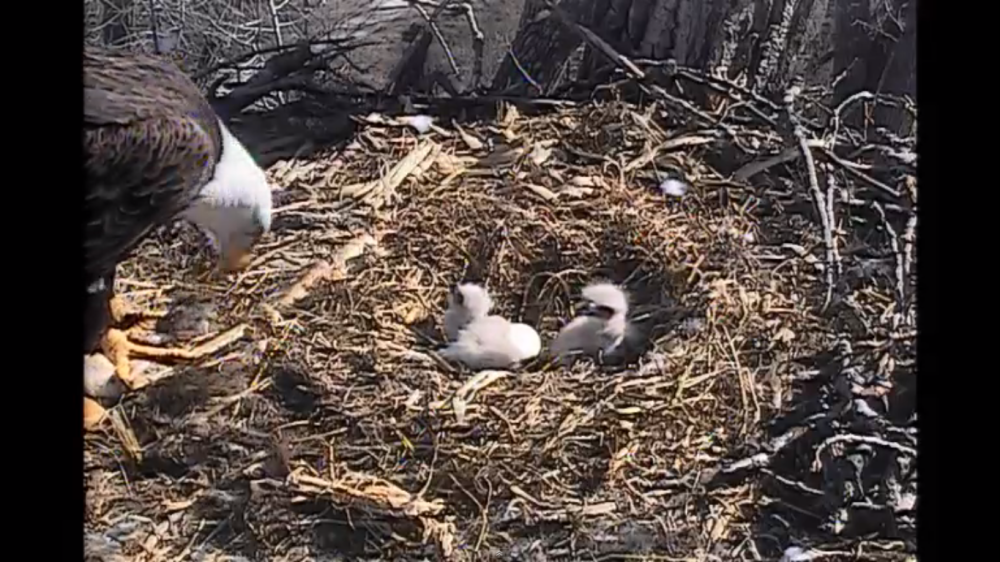Virtual Explorers: Spying on Nature
- March 31, 2015
- By Christy Peterson

One thing I love about the internet is the ability to “visit” natural areas around the world in real time. I can watch elephants in Africa, peer into the abyss of a hydrothermal vent, or watch a plucky hummingbird incubating her eggs. As I type, I am listening to baboon calls near the Olifants River in South Africa via the Africam website. Something, I presume a bat, just streaked by the camera.
While we all want students to observe nature in their own neighborhoods as much as possible, webcams open windows to worlds that most students will never see in person. They offer the opportunity to extend observations of flora and fauna beyond the backyard.
Here are two ways you might incorporate these cameras in your science activities.
Activity—Compare Ecosystems
You will need:
- Journals or paper and writing utensils
- Internet access for entire class or groups of students
- Two or more webcam sites (see resources below)
Instructions:
- Decide whether the class will work all together or in groups. Divide students up (or not) accordingly.
- Have students get out journals or a sheet of paper and writing utensils.
- Have students observe each ecosystem for 5 minutes (shorter or longer depending on age and maturity of students).
- Ask students to record observations in their journals or record sheets for each ecosystem. Following are some suggested questions/prompts:
- What kind of ecosystem are you observing (desert, forest, etc)?
- What do you think the weather is like? What makes you think that?
- Describe the plants you see.
- Describe any animals you observe.
- Describe any interactions between animals and plants or between one animal and another.
- How do the nonliving elements of this ecosystem, like rocks and water, affect the plants and animals?
- Draw a picture of this ecosystem.
- Discuss, in age-appropriate terms, why more or fewer animals were observed in the various ecosystems. Variations might be due to time of observation, resources available in that ecosystem, proximity to human population, etc.
Activity—Animal Life Cycles
You will need:
- Students journals and writing utensils
- Internet access for entire class or groups of students
- “Life cycle” webcam site (see resources below)
Instructions
- Decide whether the class will work all together or in groups. Divide students up (or not) accordingly.
- Assign each group (or have them choose) from a list of selected cams that show a portion of a particular animal’s life cycle. If you are working together as a class, you might select two or three cams to follow.
- Spend some time each day or several times a week observing the animals via the cams.
- Have students record observations in their journals, including sketches. Here are some sample questions:
- What parental behaviors do they notice?
- How do the young communicate their needs to the parents?
- How to the parents and young interact?
- How have the young changed since the last observations?
- If students are working as a whole class, you might allow time for quiet recording and then have students share and discuss their observations. If students are working in small groups, you might give each group a chance to share updates—maybe once a week.
- As observations draw to a close—the young have left the nest or the cycle is in some other way complete—have students prepare a poster or report about what they observed/learned.
Note: many of these websites are supported by advertising. Please view sites ahead of time to make sure they conform to your school’s guidelines.
“Life Cycle” Webcams
- Gray Seal Pupping Cam: http://explore.org/live-cams/player/seal-pups-cam
- Puffin Burrow Cam: http://explore.org/live-cams/player/puffin-burrow-cam
- NWF Bald Eagle Cam: http://blog.nwf.org/2014/02/bald-eagle-cam-watch-decorah-eaglets-grow-up-live/
- Great Horned Owls: http://cams.allaboutbirds.org/channel/46/Great_Horned_Owls/
- Also, check out many of the sites below, many of which include nest cams.
Sites Featuring Multiple Cams
- Ocean Networks: http://www.oceannetworks.ca/sights-sounds/live-video
- WildEarth: http://www.wildearth.tv/livecams
- Explore.org: http://explore.org (Be sure to scroll down and look at the “off season” list, as many of the “Life Cycle” cams are seasonal.)
- Cornell Lab of Ornithology Cams: http://cams.allaboutbirds.org/
- Audubon Cams: http://projectpuffin.audubon.org/audubon-live-cams
- National Park Service Webcams: http://www.nps.gov/photosmultimedia/webcams.htm
- World Land Trust: http://www.worldlandtrust.org/webcams


